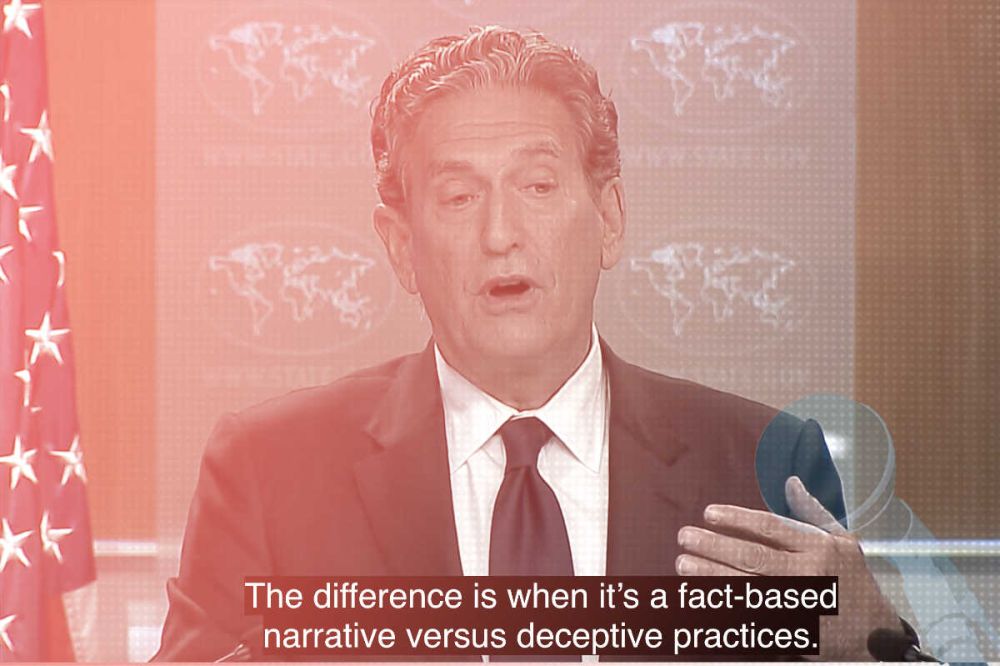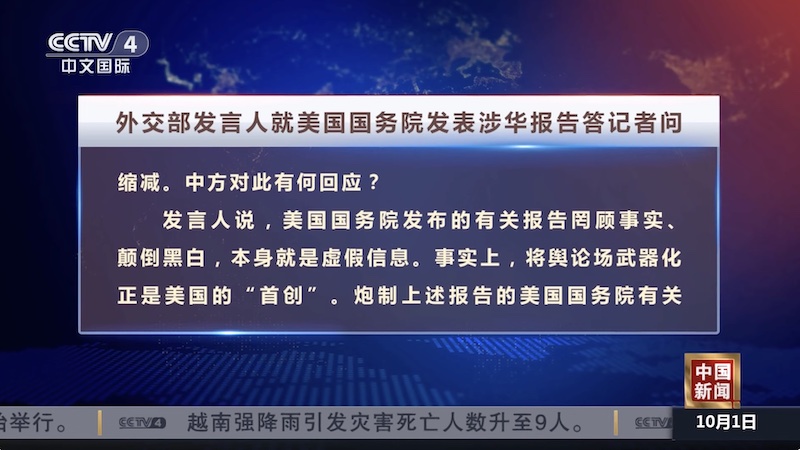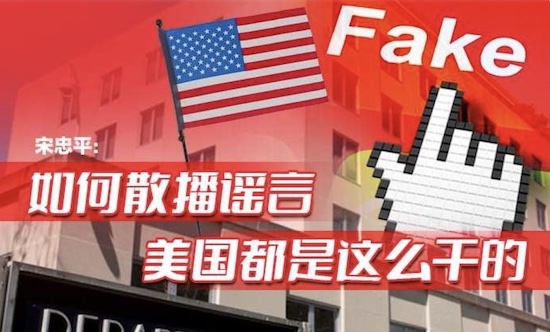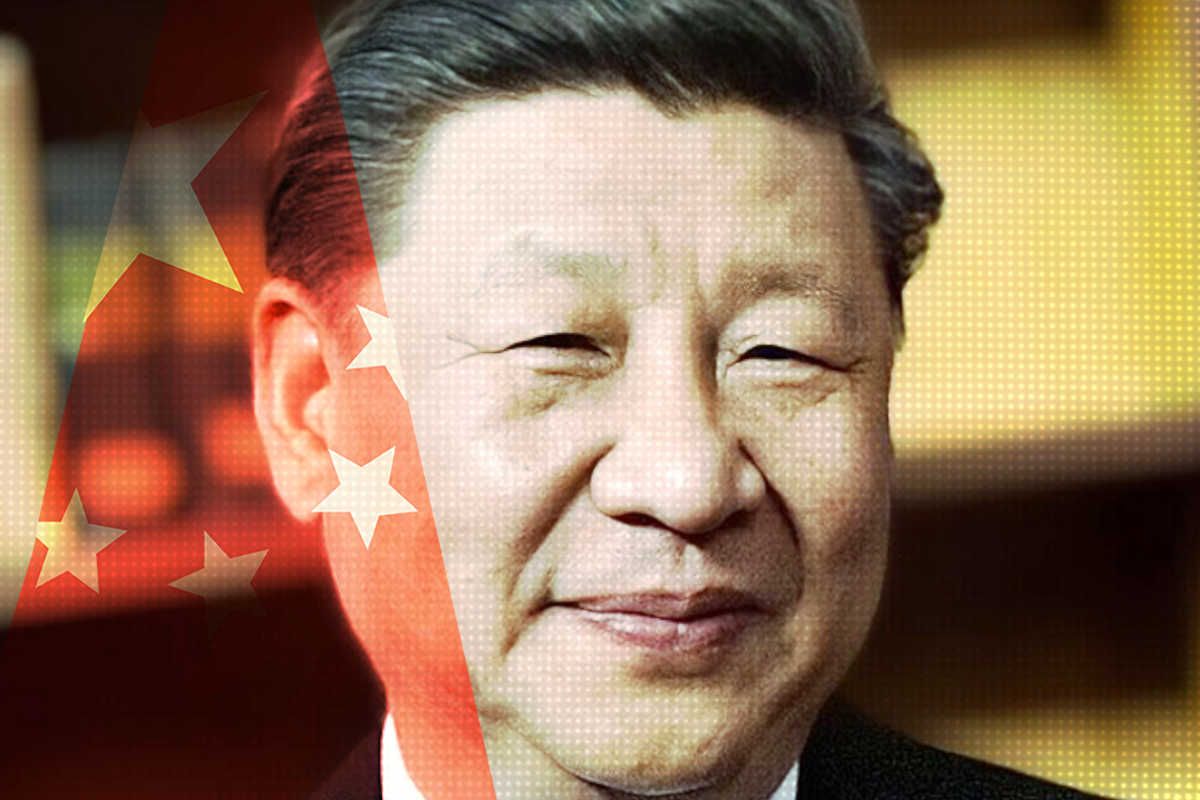Going Global
Reading China’s Media Counter-Attack

Jamie Rubin, the Special Envoy and Coordinator of the Global Engagement Center at the US Department of State, addresses the center’s report on Chinese disinformation.
Last week, the US Department of State released what it called a “landmark report” on China’s propaganda and disinformation efforts, alleging that the Chinese government is using various means — and billions of dollars in investment — to “bend the global information environment to its advantage.” The report drew snarls over the weekend from China’s Ministry of Foreign Affairs (MFA), which responded in an official release (English here) that the report itself was disinformation and that the United States is “a veritable ‘empire of lies.’”
Look more closely at China’s response to the Department of State report and a revealing pattern emerges. Far from refuting the report’s allegations, the official response from the MFA and state-run media makes the case. It demonstrates systematic control of the narrative by the Chinese Communist Party (CCP) leadership at home, even as it employs state-run channels and non-transparent propaganda accounts to reach audiences abroad.
No Discussion on the Home Front
In Chinese state media, all coverage of the Department of State report since last week has closely mirrored the official MFA release and its single-question-single-answer response. In most cases, the MFA release is reported verbatim. No media outlets have grappled with the substance of the report. To do so, after all, would invite public discussion not just of “external propaganda” (外宣), a core and openly stated practice of the CCP, but also of the legitimacy of media controls and propaganda at home.
More revealing still is the fact that the response in China’s official state media has been amplified primarily through those media specifically tasked with conducting external propaganda, suggesting that the leadership views the story as a question of managing foreign public opinion. The text from the MFA was run verbatim, for example, by the China Daily, a newspaper published by the government’s Information Office and intended for foreign consumption. Similarly, it was covered in English, with supporting comments from Chinese experts, by the Global Times, which has a special mandate to address global affairs, and which panders to nationalist sentiment at home and abroad.
The response in China’s official state media has been amplified primarily through those media specifically tasked with conducting external propaganda.
While an official Xinhua rundown of the MFA remarks was posted online over the weekend and made page three of the Chinese Communist Party’s People’s Daily on October 1, the news was largely absent from important domestic propaganda outlets, including provincial-level media. It was not reported at all during China Central Television’s official nightly newscast Xinwen Lianbo (新闻联播) on September 30 or October 1. Further substantiating the point that the story was intended chiefly for external propaganda, the MFA response was reported prominently on CCTV’s Chinese-language international channel, CCTV-4, which targets overseas Chinese audiences, and has more than one million subscribers on YouTube.

As the Chinese government rushed to refute the US Department of State report about its construction of “a global information ecosystem,” the very same ecosystem leaped into action. Attention to the issue was carefully managed and suppressed at home, while a combative counter-narrative targeted overseas audiences.
Perhaps more importantly, the MFA counter-narrative was pushed not just by well-established and overt state outlets such as China Daily, the Global Times, and CCTV-4, but by newer and more covert channels making use of international social media platforms.
New State Media, Under the Radar
One of the few outlets in China to build on the MFA remarks on the US report was Straight News (直新闻), also known as “Zhinews.” On Sunday, Straight News ran an interview with Song Zhongping (宋忠平), a military analyst who is also a program consultant and commentator for CCTV-4 — again, one of just several official television channels that broadcast outside of China, and particularly targeting diaspora communities.

In Song’s interview, re-posted by internet portal sites such as Sina.com, the analyst parroted the criticism of the MFA, accusing the US of “fabricating various forms of propaganda” on issues such as rights in Xinjiang and Hong Kong. “It must be said that the West holds control on issues of public opinion,” said Song, “and the West has long controlled global public opinion through its own means.”
The interview was shared with the 1.38 million followers of Straight News on Weibo, as well as its 35,000 followers on Facebook. It was also available through the outlet’s dedicated bilingual news app, which has been downloaded close to 700 thousand times on Android, and an unknown number of times from Apple’s App Store.
Who is Straight News?
On its Facebook account, Straight News says only that it is “a Chinese news brand focused on verticals,” and is “produced by a top news production team in China — Shenzhen Satellite TV’s ‘Greater China Live’ team.” Glossing past the remark on “verticals,” an insider reference to content viewed on mobile platforms, the “Greater China Live” program is a production of Shenzhen Media Group (深圳广电集团), or SZMG.
SZMG is directly under the propaganda department of the CCP committee of Shenzhen, a sub-provincial city in China’s southern Guangdong province. This means that both Straight News and SZMG are, strictly speaking, state-controlled.
Attention to the issue was carefully managed and suppressed at home, while a combative counter-narrative targeted overseas audiences.
In the About Us section of its official website, SZMG states unambiguously that it has operated, since its establishment “under the correct leadership of Shenzhen Municipal Committee of the CCP and the Municipal Government, and under the careful guidance of the Propaganda Department of the Shenzhen Municipal Committee of the CCP. And yet, on Facebook, where state-controlled media are labeled as a matter of policy, Straight News manages to fly under the radar.
Straight News is one of thousands of outlets, accounts, and influencers working across the global information space with non-transparent backing from the Chinese Party-state — what the US Department of State report refers to as “covert influence.” First launched in 2018, it is also a prime example of how the role of provincial and sub-provincial media groups in China is transforming under Xi Jinping’s emphasis on international influence and “telling China’s story well” as an urgent national priority.
External Propaganda, Internal Innovations
Global communication and the “struggle” for international discourse power (话语权) have been key priorities under Xi Jinping since his first major speech on ideology in August 2013, less than a year after he came to power. It was in that speech that Xi introduced the phrase “telling China’s story well,” which he defined unmistakably as a banner under which to “innovate” and remake external propaganda. In his February 2016 media policy speech, Xi urged CCP media to “strengthen international communication capacity building, and enhance our international discourse power. To do that, he said, would mean “optimizing our strategic layout, working hard to build flagship external propaganda media with strong international influence.”

In talking about the CCP’s “strategic layout,” Xi was referring not just to the central Party-state media generally associated with China’s international communication — the likes of Xinhua, China Daily, and CGTN. His vision was to remake the traditional CCP media infrastructure, from the center down to the cities, prefectures and countires, for the digital and global information age.
More concrete efforts to restructure media enterprises in China to meet this challenge accelerated after the 19th National Congress of the CCP in 2017. The formation in 2018 of the state media conglomerate China Media Group (CMG) was a part of this process. But an important phenomenon that has gone largely unnoticed in research on Chinese disinformation — including the recent Department of State report — is the active advancement of this same trend among provincial and sub-provincial media groups, which are now integral to the larger push for international propaganda.
In a major speech in January 2019, Xi Jinping spoke about the need to promote “media convergence” (媒体融合) at Party-state media across the country, which would allow the CCP to build what he called “new mainstream media” (新型主流媒体). In the specialized political discourse of the CCP, the word “mainstream” is synonymous with the enforcement of the Party’s political line, and the term “mainstream media” refers specifically to CCP-run media. Xi’s call, then, was about building a new, Party-led media system focusing on new media technologies and products.
For several years now, media convergence and sectoral restructuring have been happening actively at every level of China’s political system, creating a new generation of media under CCP control — and potentially revolutionizing (or so is the hope) the way propaganda and public opinion control are achieved, both at home and abroad.
Just three months after Xi Jinping’s 2019 speech on media convergence, the Shenzhen Media Group unveiled its own restructuring plan. Part of that plan involved the “upgrading” of the Straight News platform, created the year before, as a full-fledged multimedia brand, with communication focusing not just on Shenzhen and the surrounding areas of Guangdong province, but also on the “Greater Bay Area” (大湾区), which refers to the CCP’s vision of an integrated economic area by 2035 involving nine cities plus Hong Kong and Macau.

In July this year, the Shenzhen Media Group took the next step toward realizing Xi’s vision of a reinvigorated national Party media sector armed and ready to carry out external propaganda. It launched a new “international communication center” (国际传播中心), or ICC, whose goal, according to group chief Shang Boying (尚博英) is to “strengthen the building of international communication capacity, to tell the story of Shenzhen, Guangdong, the Greater Bay Area, and China well, and to convey China’s voice to the world.”
According to Shang, one of the international communication center’s three major external propaganda brands at present is Straight News, along with an English-language brand called “Shenzhen Channel,” and the “Greater China Live” television and video program.
For several years now, media convergence and sectoral restructuring have been happening actively at every level of China’s political system, creating a new generation of media under CCP control.
The results so far may seem underwhelming. It is difficult to know what impact, if any, the Straight News repudiation of the US disinformation report may have had on target audiences in Hong Kong, Macau, and beyond. But the Shenzhen ICC is just getting started. According to the city’s propaganda chief, Zhang Ling (张玲), the new center is the culmination of two years of planning that involved the drafting of an “international communication action plan” and the establishment of a “joint working mechanism for external propaganda.” It’s worth noting that Shenzhen, though a sub-provincial city in China, had a GDP of 477.4 billion dollars in 2022, putting it just short of the 30th ranked economy in the world, ahead of Nigeria, and just behind Thailand.
And the Shenzhen ICC is not alone. It is part of a much larger trend that involves leveraging the resources of provincial and sub-provincial media to raise the volume of the CCP’s voice internationally. In July this year alone, four international communication centers were launched, including in Hunan, Jiangsu, and Chongqing. This followed the formation of ICCs in Hubei and Fujian in May and June respectively. By late 2022, ICCs had already been launched in Jiangxi, Sichuan, Gansu, and Yunnan.
Like Shenzhen’s ICC, which will focus products like Straight News on the Greater Bay Area plus Taiwan, Yunnan’s ICC has a regional remit. As I wrote for Taiwan’s Commonwealth magazine back in August, the “Yunnan Provincial International Communication Center for South Asia and Southeast Asian Regions” focuses its communication efforts on the Mekong Delta region as well as South Asia. It involves covert information brands such as the Mekong News Network, which is active across an array of global social media platforms and is working to distribute content to news outlets across the region.
Toward a Chinese Narrative System
Careful readers might note that while China’s Ministry of Foreign Affairs responded with fury to the Department of State report, its counter-attack did not at all deny that China was seeking, as the report said, to “reshape the global information landscape.” Unless a sea of official ink on the subject is to be doubted, which it is not, this is most definitely the goal. In his political report to the 20th National Congress of the CCP last year, which drove the latest push for provincial-level media restructuring and international communication, Xi said that the Party needed to “accelerate the building of a Chinese discourse and Chinese narrative system” to tell the China story and manufacture an “credible, lovable and respectable image of China.”
Channels like Straight News are an important part of the strategy, and it is sobering to think that the expansive Department of State report does not even take into consideration this deep-level national transformation happening across China, the tip of an information iceberg.
On July 13, the China New Media Conference was held in Changsha was held in Malanshan, an area of the Hunan capital of Changsha that is famous for its association with media and culture, and also the glitzy new home of the Hunan Broadcasting System (HBS), the country’s largest state-owned television network. The conference closed with the signing of a document called the “Malanshan Declaration” (马栏山倡议), which called on “all journalists across the country working in international communications” to communicate China’s voice to the world, and steadily raise its “international communication impact.”
The list of signatories to the “Malanshan Declaration” was topped with central-level media including the People’s Daily, Xinhua News Service, CGTN, China Daily, and China News Service. It was filled out with 15 international communication centers at the provincial, sub-provincial and even city level, most less than six months old.
“International communication workers of the New Era!” the Declaration began. As for where it ends, the report from the US offers, to its credit, a fairly accurate assessment.





















